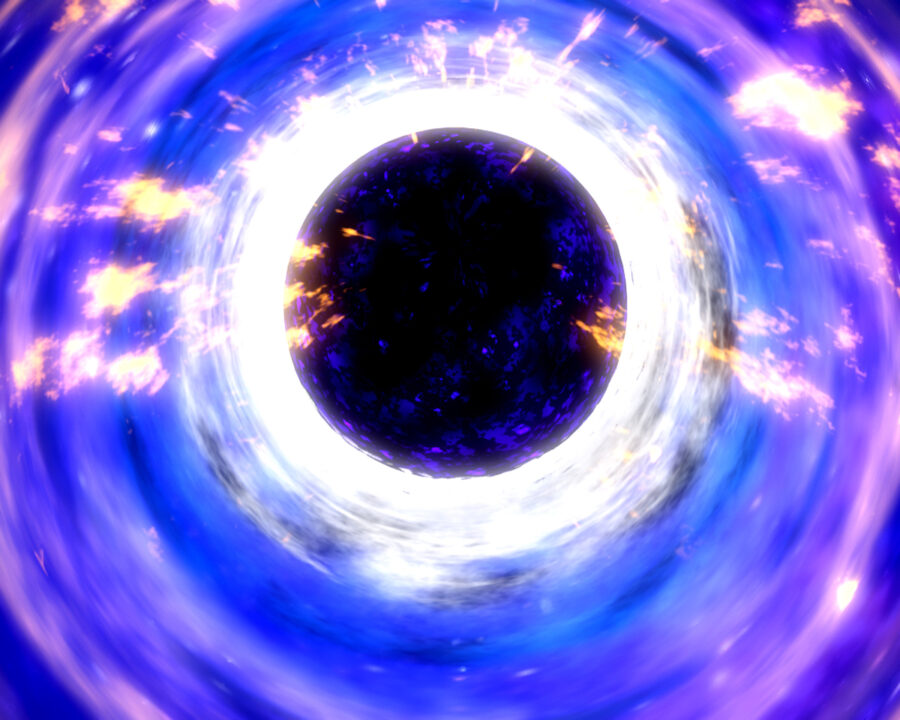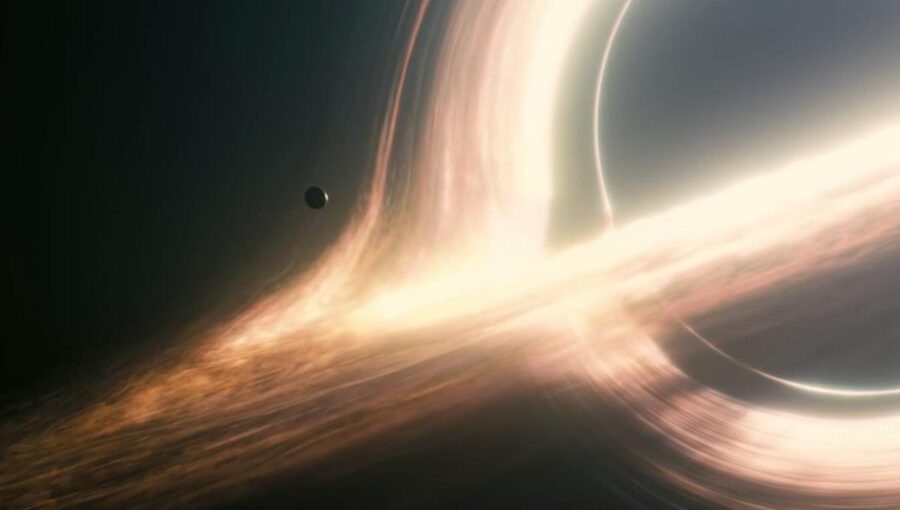A Massive Black Hole Is Devouring A Sun A Day And It’s Still Growing
When you combine massive and hungry, you end up with the largest and hungriest black hole ever seen in the Universe.
This article is more than 2 years old

There is hungry and then there is massive. There is massive and then there is massive. When you combine massive and hungry, you end up with the largest and hungriest black hole ever seen in the Universe. And that is what The Australian National University’s (ANU) research led them to find. There’s a black hole out there that’s so big and so hungry that it’s eating up an entire sun every day.
THE NEW BLACK HOLE DEVOURING THE UNIVERSE
Black holes do come in various sizes. For the longest time it was thought that there are two sizes of black holes, small and large. Nothing in between. But that idea has gone by the wayside, and scientists now believe black holes can reach every size. The one observed by ANU is not just big or even huge. It is massive, perhaps the largest ever “seen”. It is fast growing because it is hungry.
To understand how massive this black hole is, consider our sun. In terms of radius, the sun measures in around 433,000 miles. J2157, the name given to this new black hole, is 34 billion times that. BILLION with a “B”.
According to Dr. Christopher Onken, who is studying this beast, “The black hole’s mass is also about 8,000 times bigger than the black hole in the centre of the Milky Way.” Not only that, it devours what equates to nearly one sun a day. Onken also noted, “If the Milky Way’s black hole wanted to grow that fat, it would have to swallow two thirds of all the stars in our Galaxy.”
Onken and his team at ANU discovered this black hole in 2018 and what, besides its size and appetite, is so amazing is the timeframe in which this black hole was created. “We’re seeing it at a time when the universe was only 1.2 billion years old, less than 10 percent of its current age,” Onken remarked. “It’s the biggest black hole that’s been weighed in this early period of the Universe.”
Mystery still surrounds how a black hole can grow so big so early in the Universe’s lifespan. It also has left some questions that Onken and his team hope to someday work out. “With such an enormous black hole, we’re also excited to see what we can learn about the galaxy in which it’s growing,” Onken said. “Is this galaxy one of the behemoths of the early Universe, or did the black hole just swallow up an extraordinary amount of its surroundings? We’ll have to keep digging to figure that out.”
The rest of the scientific community is also curious to get some answers. Team member Dr. Fuyan Bian remarked, “We knew we were onto a very massive black hole when we realized its fast growth rate. How much black holes can swallow depends on how much mass they already have.” Bian, who is also a staff astronomer at the European Southern Observatory, added, “So, for this one to be devouring matter at such a high rate, we thought it could become a new record holder. And now we know.”
Yes, we know but there is still so much more to learn.
WHAT IS A BLACK HOLE?

While the name may suggest emptiness, a black hole is far from empty. They act like vacuums. Once you get in their gravity pull, also known as the event horizon, there is no getting out. Their pull is so great that not even light can escape, hence the name black hole.
Think of the event horizon as the point of no return. The closer an object, or light, gets to a black hole, the more speed it would need to escape. But the event horizon is where an object is close enough to the black hole were to escape, it would have to be moving faster than the speed of light. Since Einstein and his theory of special relativity tells us nothing in space can travel faster than light, once the event horizon is crossed, you now become the property of the black hole.
Black hole size matters, but large or small, they are equally lethal. With their tremendous gravitational pull, they are able to take large amounts and squeeze them into a relatively (speaking) small area. As NASA describes it, “think of a star ten times more massive than the Sun squeezed into a sphere approximately the diameter of New York City.”
Black holes got their name because they cannot be seen with the naked eye, even when enhanced by one of the amazing telescopes we have at our disposal. They are virtually invisible since nothing can escape them, not even light. But they can be seen by telescope when an event is happening within the vicinity of the black hole. We can observe things being drawn into them. This is how astronomers can determine where black holes are located and what size we may be looking at.
A SUPERNOVA EXPLOSION
A supernova explosion is how most black holes form. When a large star dies it typically dies from the center, collapsing in on itself, thus causing the supernova explosion. Remnants from this are what create a black hole and its gravitational pull. Depending on the size of the dying star will give you the size of the forming black hole.












